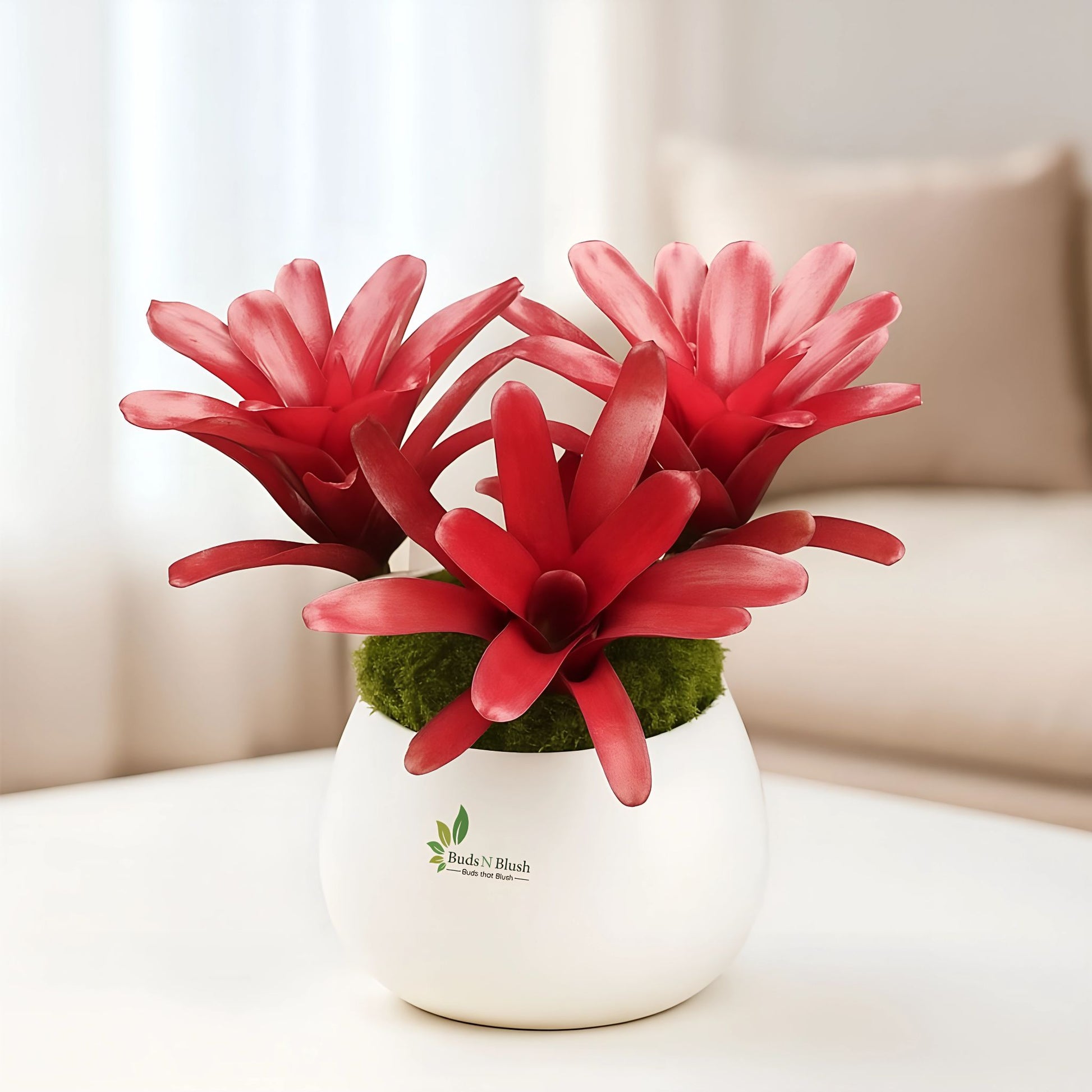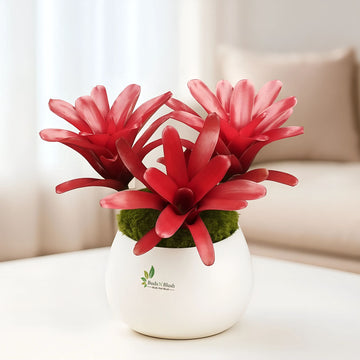Neoregelia Red Fireball bromeliad


What's in the box?
✅ Neoregelia Red Fireball – A Burst of Tropical Scarlet
The Neoregelia ‘Red Fireball’ is a compact and vibrant bromeliad known for its intense, fiery red rosette of leaves. Perfect for adding bold color to gardens, balconies, and indoor spaces, it thrives as a low-maintenance ornamental plant that brings year-round tropical charm.
✅ Origin and Natural Habitat
-
Native to the tropical rainforests of South America, especially Brazil
-
Naturally grows as an epiphyte, attaching to trees and thriving in filtered light
-
Prefers warm, humid environments with good air circulation
-
Adaptable to both soil and mounted displays in decorative arrangements
✅ Perfect Placement for a Stunning Display
-
In rock gardens or tropical-themed landscapes for bold splashes of red
-
As a tabletop centerpiece in decorative pots
-
Mounted on driftwood or bark for an authentic rainforest look
-
In shaded garden beds under taller plants or trees
-
Along balconies, patios, or windowsills for bright color accents
✅ Care Guide – From Nurturing to Thriving
-
Prefers bright, indirect light to maintain vibrant red foliage
-
Water directly into the central rosette and refresh regularly to prevent stagnation
-
Keep soil or mounting medium slightly moist but well-drained
-
Use a balanced, diluted liquid fertilizer monthly during growing season
-
Protect from frost and prolonged direct midday sun to prevent leaf burn
-
Mist occasionally to increase humidity, especially indoors
✅ Benefits of Growing Neoregelia Red Fireball
-
Striking year-round foliage color without the need for flowers
-
Compact and perfect for small spaces, tabletops, and terrariums
-
Low maintenance and drought tolerant once established
-
Excellent for adding tropical vibrancy to both indoor and outdoor spaces
-
Can be grown in creative arrangements and vertical gardens
✅ Common Problems and How to Prevent Them
-
Faded leaf color from low light – move to brighter, indirect light
-
Rot from stagnant water – refresh rosette water frequently
-
Browning tips from low humidity – mist plant regularly
-
Pests like scale or mealybugs – treat with insecticidal soap or neem oil
Enjoy Free Delivery on Orders Over ₹450!
Spend more than ₹450 and get free shipping—it's a great value to buy more and save on delivery fees. Orders below ₹450 will incur a shipping charge, which varies based on your location.
Your Satisfaction Is Our Priority
We want you to be 100% happy with your purchase. If your plant arrives dead, you can return or exchange it within 10 days of delivery. Returns or refunds can also be requested after 10 days, but please provide clear photos or videos showing the condition of the plant.







